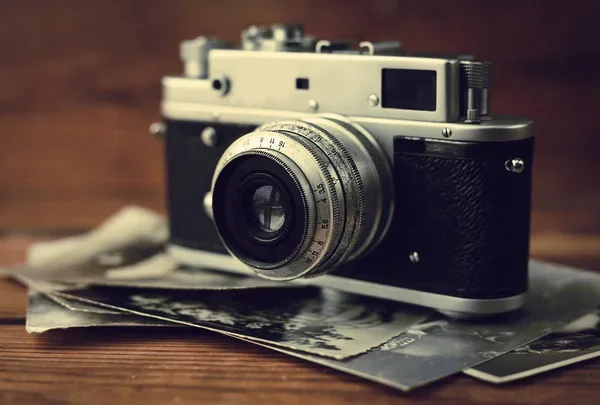Vintage photography evokes nostalgia and an appreciation for the artistry of past eras. One of the most significant and intriguing aspects of these early photographs is the brown pigment that appears in them. Understanding why this brown tone is so prevalent and what it signifies requires a deep dive into the materials, processes, and chemistry behind historical photography.
The Evolution of Photography and the Brown Tones
Early photography from the 19th and early 20th centuries is notable for its distinctive sepia tone or brownish hues. This effect wasn’t always intentional, but rather a product of the available technology and the chemical processes used in creating photographs.
Photographers in the 19th century primarily worked with silver salts suspended on plates of glass or metal. These plates were then exposed to light through cameras, capturing images based on light exposure. After exposure, the development process often led to a photograph that displayed a brownish or sepia tone.
The term sepia itself comes from the brownish ink derived from the cuttlefish, which was used as an early pigment in toning photographs. However, the brown hues in photographs weren’t only a result of sepia toning. The inherent aging of photographs and the chemical compositions used during these eras also played a significant role.
Chemical Origins of Brown Pigmentation
Brown Pigment in Vintage Photos that appears photos is often attributed to the oxidation of silver in the photograph’s emulsion. This oxidation occurs over time as the silver particles within the image degrade, leading to a shift in color. Silver particles, when exposed to air and light, slowly oxidize, producing a yellowish-brown hue.
In many cases, the chemicals used during the developing process contributed to this brown pigment. Early photographers used a variety of fixatives and toners, including gold and selenium toners, which produced a range of colors from yellow to deep brown. Over time, these chemicals reacted with the environment, further emphasizing the brown tones.
Sepia Toning Process Adding Intentional Brown Pigment
While some early photographs naturally developed brown tones through chemical degradation, many photographers deliberately used the sepia toning process to enhance the aesthetic appeal of their images.
The sepia toning process involved replacing the silver in the photo with compounds such as silver sulfide. This not only gave the photographs their characteristic brownish tone but also increased the longevity of the image. Sepia-toned photographs are known to be more stable and resistant to environmental degradation than those developed solely with silver.
The Artistry and Functionality of Brown Pigment
For many early photographers, the use of brown pigment was more than just a side effect of the development process. The warm hues of sepia photographs were considered more aesthetically pleasing than stark black-and-white images. The softness of the brown pigment gave photos a timeless quality, which made them particularly popular for portrait photography.
Additionally, the sepia toning technique became favored for its practical benefits. The brown pigment helped protect photographs from the damaging effects of light exposure, ensuring they would last longer.
Aging and Environmental Effects on Brown Pigment
Over time, vintage photographs undergo further changes due to environmental factors. Temperature, humidity, and exposure to light can accelerate the degradation of photographic materials, causing shifts in the original tones. Photographs stored in humid or improperly ventilated environments may develop stronger brown tones due to the accelerated oxidation of the silver.
While modern photographic preservation techniques can mitigate these effects, many vintage photographs exhibit an intensified brown tone due to years of exposure to the elements.
Collecting and Restoring Vintage Photos with Brown Pigment
Collectors of vintage photographs value the brown pigment seen in these images not only for its historical authenticity but also for its aesthetic charm. However, collectors and restoration experts often face challenges in maintaining the original tone of these images.
Restoring vintage photographs requires delicate handling and the use of specialized techniques to prevent further damage to the photographic emulsion. In some cases, restorers may choose to lighten overly darkened images by carefully adjusting the oxidation process. However, care must be taken to ensure that the historical integrity of the photograph is preserved.
Modern Applications and Emulation of Vintage Brown Pigment
Today, the brown pigment seen in vintage photographs is often emulated in modern photography and digital Editing Software. Photographers and artists alike have recognized the timeless appeal of the sepia tone and its ability to evoke a sense of nostalgia.
Many digital photography tools now offer sepia filters, which mimic the look of early photographs by adding warm brown tones to an image. This emulation of vintage photography continues to be popular in wedding photography, portrait photography, and various other artistic fields.
Conclusion
The brown pigment found in vintage photos is a testament to the evolution of photographic technology, chemistry, and artistry. From the early days of photography, where brown tones were a natural result of the development process, to the intentional use of sepia toning to enhance image longevity and aesthetic appeal, brown pigment has played a critical role in shaping how we view and appreciate historical images.
Understanding the origins and causes of this distinctive coloration allows us to better appreciate the legacy of vintage photography and its enduring influence on modern-day photographic techniques. Whether as a result of chemical degradation, artistic choice, or environmental factors, the brown pigment in vintage photos remains an iconic hallmark of photographic history.
Magazin Union guides you through the latest trends and stories, providing valuable information and perspectives on current events and more.





